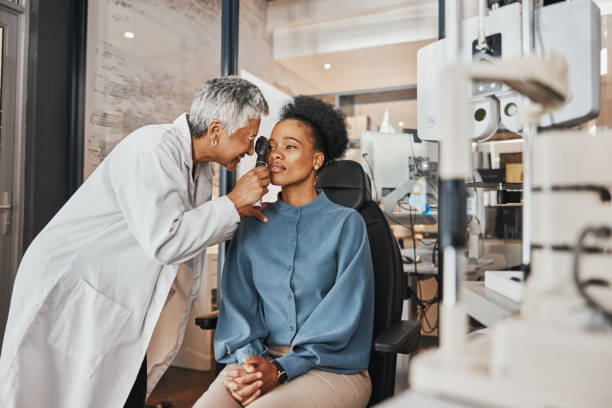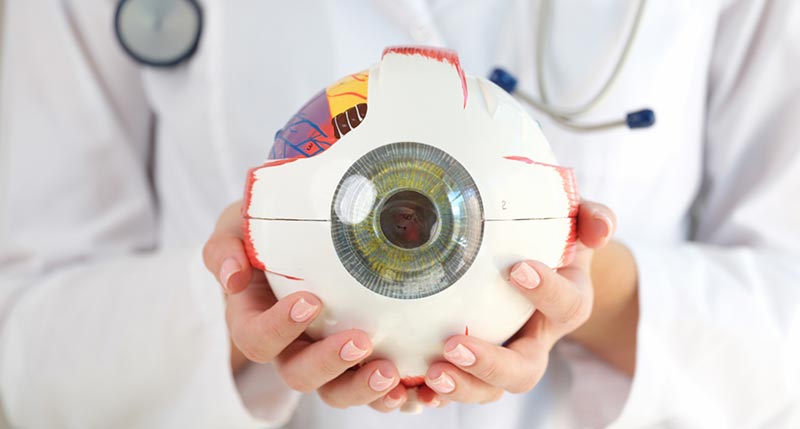Expert Eye Doctor in Riverside: Your Vision is Our Priority
Expert Eye Doctor in Riverside: Your Vision is Our Priority
Blog Article
The Comprehensive Eye Exam: What to Expect During Your Visit to the Eye Doctor
A see to the eye medical professional for a detailed eye test is even more than a routine examination; it is a vital step in securing your aesthetic health. What specifically occurs throughout the eye health assessment, and just how does it influence the prescription process?
First Assessment
The preliminary consultation throughout an eye examination functions as an important structure for recognizing a patient's visual health and wellness needs. This stage sets the tone for the entire examination procedure, permitting the optometrist to gather vital details regarding the patient's case history, lifestyle, and certain vision concerns. By meticulously assessing any type of pre-existing problems, medications, or previous surgical treatments, the eye care professional can customize the examination to deal with specific requirements efficiently.

Furthermore, the initial appointment is an opportunity for people to articulate any concerns or concerns, promoting a joint connection with their healthcare company. This interaction not just guarantees that the client feels educated and comfy yet also equips them to take part proactively in their eye health management. Jointly, these conversations make it possible for the eye doctor to design a customized evaluation strategy, making certain ideal care and exact medical diagnosis.
Aesthetic Acuity Examination
Kicking off the core parts of an eye examination, the visual acuity test is created to analyze the intensity and clearness of a client's vision. This critical examination assists establish just how well an individual can determine letters or signs at a standardized range, usually using a Snellen chart (Optometrist Riverside). The chart makes up rows of letters that reduce in size inside out, with the individual placed at a customary range of 20 feet
During the examination, the individual is asked to cover one eye and check out aloud the tiniest line of letters they can see plainly. This process is repeated for the other eye. The outcomes are videotaped as a portion, with 20/20 vision indicating normal aesthetic skill-- where the patient can see at 20 feet what an individual with typical vision can see at that distance.
The visual acuity test also identifies prospective refractive errors such as hyperopia, myopia, or astigmatism, which may require restorative lenses. By developing a standard of visual performance, the test is a crucial analysis device that helps the eye treatment specialist in creating an appropriate therapy plan tailored to the patient's one-of-a-kind aesthetic needs.
Eye Wellness Assessment
Complying with the visual acuity examination, a thorough eye wellness analysis is conducted to guarantee the total health of the eyes. This critical segment of the eye examination includes an extensive examination of both the outside and interior structures of the eye.
With the use of ophthalmoscopy or fundus digital photography, the retina, optic nerve, and blood vessels are thoroughly assessed. In several instances, pupil dilation is done to improve presence of the internal eye frameworks, although this might result in short-lived light level of sensitivity for the client.
In addition, intraocular stress is gauged to screen for glaucoma danger. This is usually done making use of tonometry, which can spot elevated pressure degrees that may recommend prospective damage to the optic nerve. Jointly, these evaluations develop a detailed evaluation to preserve ocular wellness.
Refraction and Prescription
Refraction is an advanced procedure carried out by eye treatment professionals to establish the exact lens power required to correct refractive mistakes such as myopia, presbyopia, astigmatism, and hyperopia. The goal of this procedure is to evaluate just how light bends as it passes with the eye, allowing the specialist to establish whether rehabilitative lenses are necessary for enhanced aesthetic acuity.
During the refraction process, the client is asked to browse a phoropter, a device that contains numerous lenses. The practitioner will methodically alter these lenses and ask the patient to contrast quality in between choices until the most effective possible vision is achieved. This procedure is important in crafting a precise prescription that specifies the ideal lens power for glasses or get in touch with lenses.
The prescription originated from this treatment not just maximizes vision yet also serves as a foundation for picking ideal rehabilitative eyeglasses. It is important to ensure that prescriptions are frequently updated, as modifications in vision can happen with time, stressing the value of regular eye exams. This careful attention to detail helps keep clear, comfy vision in every day life.
Follow-Up Suggestions

During a follow-up go to, the eye physician will conduct a collection of examinations to review aesthetic skill and look for any adjustments in vision that could demand an upgrade to the prescription. In addition, the follow-up offers a try this possibility to discuss any kind of discomfort or issues experienced with existing eyewear. Adjustments can be made to ensure convenience and efficacy, whether via lens modification or structure adjustments.
For individuals with recurring conditions such as glaucoma, diabetes-related eye problems, or macular degeneration, even more regular follow-ups may be needed. These appointments are vital for taking care of and potentially slowing down the progression of eye condition. Adhering to these recommendations can substantially add to maintaining aesthetic wellness and preventing lasting complications.
Conclusion
The detailed eye test is an essential process for keeping visual wellness, encompassing an in-depth assessment of clinical background and vision problems. Key elements consist of the aesthetic acuity test, which evaluates vision clearness, and the eye wellness analysis, which analyzes the general condition of the eyes. Refraction examinations aid establish the precise lens prescription essential my sources for optimum vision correction. Follow-up referrals supply guidance for ongoing eye treatment, making sure that any possible problems are attended to quickly and efficiently.
A see to the eye doctor for a detailed eye test is even more than a regular examination; it is a vital step in guarding your visual health and wellness.Kicking off the core parts of an eye evaluation, the visual skill examination is designed to assess the sharpness and clarity of an individual's vision.Following the aesthetic skill test, a detailed eye wellness analysis is performed to guarantee the general health of the eyes. These gos to permit the eye care expert to keep an eye on adjustments in vision, upgrade prescriptions, and analyze the general health and wellness of the eyes. Key components consist of the visual acuity test, which evaluates sight clearness, and the eye health and wellness analysis, which examines the overall condition Clicking Here of the eyes.
Report this page